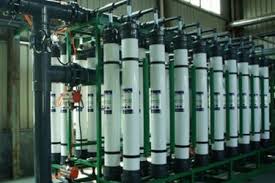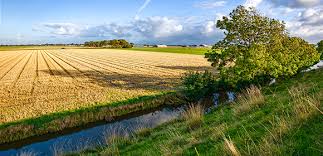The Four (4) Constituents of Soil
The soil lump has mineral matter and organic matter. In essence, in this article, you will learn of the four constituents of soil which are mineral matter, organic matter, soil air and soil water.
You can easily recall what definitions and functions of soil are. But you are yet to know what constituents the soil contains. That is what this unit will do. That is, if you hold a lump of soil you will know what it is made of. Do you know that soil contains air and water at any point in time?
Most soils have four main constituents. They are mineral matter, organic matter, soil air and soil water. The percentage of mineral matter in the soil in 45% while that of organic matter is 5%.
However, soil air and soil water each has ± 25%. Do you notice the percentages of soil air and soil water having ± signs? This is an indication that they vary according to seasons of the year.
This is the reasons why they are regarded as variable constituents, whereas mineral matter and organic matter are invariable constituents. The figure illustrates the constituents of soil.
The Four (4) Constituents of Soil

1. Mineral Matter
Mineral matter includes all inorganic substances in the soil. These include the rock fragments made up of sand, silt and clay fractions and the primary and secondary minerals.
Sand, silt and clay fractions form the texture of the soil. Of all these, clay fractions are the most important. This is because they consist of very small platy-structure mineral fragments which can only be identified by the use of electron microscope. You should also note that clay particles are also chemically active.
The primary and secondary minerals in the mineral matter of the soil are regarded as silicate minerals divided into macro and micro nutrients.
Macro-nutrients are made of metallic cautions such as calcium, magnesium, potassium and sodium, and the non-metallic elements such as nitrogen and phosphorus.
Micro-nutrients are also known as trace elements because they are usually present in the soil in only minute’s quantities. Examples of micro-nutrients are boron, copper, zinc, manganese, cobalt, chlorine, molybdenum and vanadium.
2. Organic Matter
You will recall that organic matter is said to be 5% of the soil by weight. It is an accumulation of partially decayed and partially synthesized organic residues. Therefore, the material making up organic matter is continually being broken down by soil micro- organisms.
Although the organic matter of a soil is small, its influence on other soil properties is far greater than the low percentage would indicate. The beneficial effects of soil organic matter include.
Read Also : The Science of Pedology and Functions of Soil
Functioning as a granulator of the mineral particles and contributes to soil aggregation thus improving physical properties and reducing erosion process;
Modifying water retention properties especially in sandy soils thereby increasing the amount of water a soil can hold;
Supplying most of the nitrogen and sulphur and a major source of phosophorus.
Supplying most of the cation exchange capacity of acidic and highly weathered soils
Forming complexes with micro-nutrients which prevent the leaching and

Being the main source of energy for soil mirco-organisms.
From the above, you could see that we can conclude that without organic matter constituents, biochemical activities would practically come to a standstill in any soil.
3. Soil Air
Now we can now turn to considering the variable constituents of soil. The first we will consider is soil air.
Soil air is regarded as the soil atmosphere from where organisms obtain oxygen for metabolism their and for the disposal of carbon dioxide and other obnoxious gases.
Soil air varies in accordance with the rate at which organisms take up oxygen and deposit carbon dioxide; and the rate it is replenished from the atmosphere.
It is, however, necessary to note that the content and composition of soil air is determined, to a large extent, by the soil-water relationships.
Finally, the tendency for rapid changes in soil air has marked effect not only on the growth of economic plants but also on other organisms that live in the soils.
4. Soil Water
Soil water is the second soil constituent that is variable. Do you know the main source of soil water? It is water from precipitation i.e. rain, snowfall, and hail.
There are three types of soil water. These are:
Hygroscopic or absorbed water,
Percolation or gravitational water, and
Capillary water.
Let us now consider what each of these types stand for in soil.
Hygroscopic water is inn from of ions held by soil particles through the process of adsorption. This type of water is very small in quantity and is not usually available to plant roots.
Percolation water is only available in soil when there is a surplus water. It moves through the soil as a result of gravitational attraction. This type of water moves very fast in the soil and because of this it is not available to plants. Hence, it is hardly of any important to plants.
Capillary water is that soil drawn up through the fine interstices which from capillaries between soil particles. Capillary water is better imagined as being analogous to the spreading of water in a blotting paper. Hence, the interconnecting soil vesicles make the water spread easily through the pores. It is the only soil water that is readily available to plants.
Read Also : Heavy Metal Contamination in Soil
You need to also know that the rate at which water sinks through the soil, known as infiltration capacity and permeability depends on the texture, structure and the initial moisture content in the soil.
In conclusion, this article has clearly indicated to you that mineral matter, organic matter, soil air and soil water are the constituents of soil. While mineral matter is 45% of the soil, organic matter is 5% while soil air and soil water are ± 25% each. Mineral matter is made up mainly of texture and nutrients while organic matter is the synthesized plant and animal tissues.
You are also made to know that soil air is the soil atmosphere where metabolism of soil organisms occurs. It is also shown in this unit that soil water are of three types of hygroscopic, percolation and capillary water.



